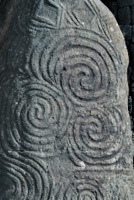Need-to-know basis
The term "need to know", when used by government and other organizations (particularly those related to the military or espionage), describes the restriction of data which is considered very sensitive. Under need-to-know restrictions, even if one has all the necessary official approvals (such as a security clearance) to access certain information, one would not be given access to such information, or read into a clandestine operation, unless one has a specific need to know; that is, access to the information must be necessary for the conduct of one's official duties.
As with most security mechanisms, the aim is to make it difficult for unauthorized access to occur, without inconveniencing legitimate access. Need-to-know also aims to discourage "browsing" of sensitive material by limiting access to the smallest possible number of people.
The Battle of Normandy in 1944 is an example of a need-to-know restriction. Though thousands of military personnel were involved in planning the invasion, only a small number of them knew the entire scope of the operation; the rest were only informed of data needed to complete a small part of the plan.
Problems and criticism
It has been alleged that need-to-know (like other security measures) can be misused by some personnel who wish to refuse others access to information they hold in an attempt to increase their personal power, or to prevent unwelcome review of their work.
The need to know principle is at odds with most purposes of intelligence and research. While one part of an institution may have knowledge of some data, the rest of this institution as well as other institutions remain ignorant. Since experience shows that data shows its most valuable information only when freely [[connected], the need to know is in fact putting a limit on information that intelligence agencies can gather (even if there are no limits to the amount of data).
In computer technology
The discretionary access control mechanisms of some operating systems can be used to enforce need to know. In this case, the owner of a file determines whether another person should have access. Need to know is often concurrently applied with mandatory access control schemes, in which the lack of an official approval (such as a clearance) may absolutely prohibit a person from accessing the information. This is because need to know can be a subjective assessment. Mandatory access control schemes can also audit accesses, in order to determine if need to know has been violated.
The term is also used in the concept of graphical user interface design where computers are controlling complex equipment such as airplanes. In this usage, when many different pieces of data are dynamically competing for finite UI space, safety-related messages are given priority.
